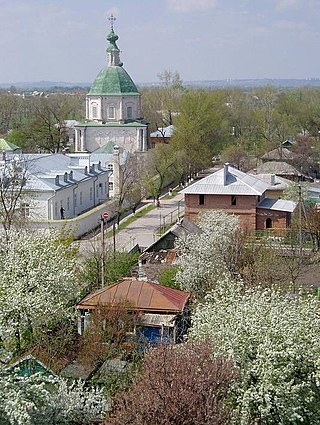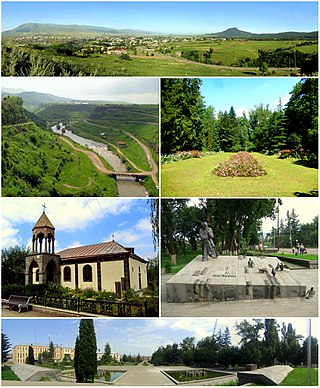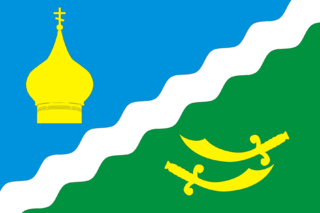Related Research Articles

The Don is the fifth-longest river in Europe. Flowing from Central Russia to the Sea of Azov in Southern Russia, it is one of Russia's largest rivers and played an important role for traders from the Byzantine Empire.

The River Don is a river in South Yorkshire and the East Riding of Yorkshire, England. It rises in the Pennines, west of Dunford Bridge, and flows for 69 miles (111 km) eastwards, through the Don Valley, via Penistone, Sheffield, Rotherham, Mexborough, Conisbrough, Doncaster and Stainforth. It originally joined the Trent, but was re-engineered by Cornelius Vermuyden as the Dutch River in the 1620s, and now joins the River Ouse at Goole. Don Valley is a UK parliamentary constituency near the Doncaster stretch of the river.

Stepan Timofeyevich Razin, known as Stenka Razin, was a Don Cossack leader who led a major uprising against the nobility and tsarist bureaucracy in southern Russia in 1670–1671.

The James River is a river in Virginia that begins in the Appalachian Mountains and flows from the confluence of the Cowpasture and Jackson Rivers in Botetourt County 348 miles (560 km) to the Chesapeake Bay. The river length extends to 444 miles (715 km) if the Jackson River is included, the longer of its two headwaters. It is the longest river in Virginia. Jamestown and Williamsburg, Virginia's first colonial capitals, and Richmond, Virginia's current capital, lie on the James River.

Rostov-on-Don is a port city and the administrative centre of Rostov Oblast and the Southern Federal District of Russia. It lies in the southeastern part of the East European Plain on the Don River, 32 kilometers (20 mi) from the Sea of Azov, directly north of the North Caucasus. The southwestern suburbs of the city lie above the Don river delta. Rostov-on-Don has a population of over one million people and is an important cultural centre of Southern Russia.

The Gambia River is a major river in West Africa, running 1,120 kilometres (700 mi) from the Fouta Djallon plateau in north Guinea westward through Senegal and The Gambia to the Atlantic Ocean at the city of Banjul. It is navigable for about half that length.

Borisoglebsky is an urban locality and the administrative center of Borisoglebsky District of Yaroslavl Oblast, Russia, located on the Ustye River, 16 kilometers (9.9 mi) from Rostov and 77 kilometers (48 mi) southwest of Yaroslavl. Population: 5,646 (2010 Russian census); 5,957 (2002 Census); 6,327 (1989 Soviet census); 4,600 (1968).

The Rappahannock River is a river in eastern Virginia, in the United States, approximately 195 miles (314 km) in length. It traverses the entire northern part of the state, from the Blue Ridge Mountains in the west where it rises, across the Piedmont to the Fall Line, and onward through the coastal plain to flow into the Chesapeake Bay, south of the Potomac River.

Novocherkassk is a city in Rostov Oblast, Russia, located near the confluence of the Tuzlov and Aksay Rivers, the latter a distributary of the Don River. Novocherkassk is best known as the cultural capital of the Cossacks, and as the official capital of the Don Cossacks. Population: 168,746 (2010 Russian census); 170,822 (2002 Census); 187,973 (1989 Soviet census).

Operation Little Saturn was a Red Army offensive on the Eastern Front of World War II that led to battles in Don and Chir rivers region in German-occupied Soviet Union territory in 16–30 December 1942.

Starocherkasskaya, formerly Cherkassk (Черка́сск), is a rural locality in Aksaysky District of Rostov Oblast, Russia, with origins dating from the late 16th century. It is located on the right bank of the Don River approximately 35 kilometers (22 mi) upstream from the major Russian port city of Rostov-on-Don.

Stepanavan, is a town and municipal community in the Lori Province of Armenia. It is located 139 km north of the capital Yerevan and 24 km north of the provincial centre Vanadzor, halfway between Yerevan and Tbilisi. As of the 2011 census, the population of the town is 13,086. Currently, the town has an approximate population of 10,800 as per the 2016 official estimate.

Ostrogozhsk is a town and the administrative center of Ostrogozhsky District in Voronezh Oblast, Russia, located on the Tikhaya Sosna River, 142 kilometers (88 mi) south of Voronezh, the administrative center of the oblast. As of the 2021 Census, its population was 32,520.

Vyoshenskaya, colloquially known as Vyoshki, is a rural locality and the administrative center of Sholokhovsky District of Rostov Oblast, Russia, located in the northern reaches of the Don River on its left bank. Population: 9,261 (2010 Russian census); 9,317 (2002 Census); 9,578 (1989 Soviet census).
Rusʹ Khaganate, or kaganate of Rus is a name applied by some modern historians to a hypothetical polity suggested to have existed during a poorly documented period in the history of Eastern Europe between c. 830 and the 890s.

Nikolai Efimovich Timkov was a Soviet Russian painter, Honored Artist of Russian Federation, and a member of the Saint Petersburg Union of Artists. He lived and worked in Leningrad and is regarded as one of the leading representatives of the Leningrad School of Painting, worldwide known for his landscape paintings.

Vesyegonsky District is an administrative and municipal district (raion), one of the thirty-six in Tver Oblast, Russia. It is located in the northeast of the oblast and borders with Cherepovetsky District of Vologda Oblast in the northeast, Breytovsky District of Yaroslavl Oblast in the southeast, Krasnokholmsky District in the south, Molokovsky District in the southwest, Sandovsky District in the west, and with Ustyuzhensky District of Vologda Oblast in the northwest. The area of the district is 2,047 square kilometers (790 sq mi). Its administrative center is the town of Vesyegonsk. Population: 13,481 ; 16,517 (2002 Census); 19,879 (1989 Soviet census). The population of Vesyegonsk accounts for 54.4% of the district's total population.

Sergey Jacques Paramonov was a Soviet and Australian entomologist, specializing on flies (Diptera), of which described about 700 species and subspecies. Paramonov published over 185 scientific articles, some of which were published posthumously.

Matveyev Kurgan is a rural locality and the administrative center of Matveyevo-Kurgansky District, Rostov Oblast, Russia.

Rostov movable railway bridge is a three-span arched double track bridge with a lifting middle part through the Don River. It is situated in Rostov-on-Don near the river Temernik’s mouth between the stations Rostov Glavny and Zarechnaya of North Caucasus Railway. The majority of passenger trains traveling through Rostov and a small amount of freight trains go through the bridge.
References
- ↑ Шапоренко, Александр Васильевич. "Багаевская средняя школа №3 - Багаевская средняя школа №3". www.bagschool3.ru. Archived from the original on 2017-08-05. Retrieved 2017-07-23.
- ↑ A.V. Shaporenko. It happened on the Don River, Svetlyi Put 2007. №76-81 dated from July 22
- 1 2 A.V. Shaporenko. Island of treasures or an island of lovers // Svetlyi Put. No. 90-92 dated from 11 July
- 1 2 A. F. Rybalkin, V.E. Kononenko, G.V. Pimanova, V.A. Buzniakov. History of the land Bagaevskaya: essays of history and culture. The second edition, supplemented by the administration of the Bagaevskaya district, 2003. Page 50.
- ↑ The robbery of the steamer "Petr" // Priazovsky region. 1913. Aug. 21 (No. 218)
- ↑ "Ограбление парохода Елпидифора Паромонова". www.donvrem.dspl.ru.
- ↑ A. F. Rybalkin, V.E. Kononenko, G.V. Pimanova, V.A. Buzniakov. History of the land Bagaevskaya: essays of history and culture. The second edition, supplemented by the administration of the Bagaevskaya district, 2003. Page 108
- ↑ A. F. Rybalkin, V.E. Kononenko, G.V. Pimanova, V.A. Buzniakov. History of the land Bagaevskaya: essays of history and culture. The second edition, supplemented by the administration of the Bagaevskaya district, 2003. Page 113